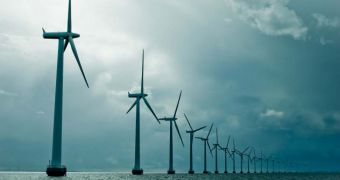This March 25, manufacturing company Siemens announced plans to invest an impressive £160 million (approximately €191 million / $264 million) in offshore wind power.
More precisely, the company says that said sum of money will serve to set up new wind turbine production and installation facilities in the United Kingdom.
On its website, Siemens details that the projects targeted by this investment are the Green Port Hull construction, assembly, and service facility, and a new rotor blade manufacturing plant in Paull, East Riding.
Interestingly enough, the implementation of these projects is to get a helping hand from Associated British Ports, Siemens' partner, which has agreed to support this initiative with an investment of £150 million (roughly €179 million / $247 million).
Siemens and Associated British Ports estimate that, all in all, this round of investments in offshore wind power will translate into the creation of about 1,000 new direct job opportunities.
Of these 1,000 jobs, 550 will be available in rotor blade production, and 450 will be created by the Green Port Hull construction, assembly, and service facility.
The manufacturing company goes on to argue that, all things considered, the projects will also benefit the economy by creating several more additional jobs during the construction phase and indirectly in the supply chain.
Siemens says that, should things go according to plan, operations at the Green Port Hull facility will begin sometime in the first few weeks of 2016.
Work at the rotor blade manufacturing plant, on the other hand, should debut in the summer of 2016. The factory is expected to reach full capacity in mid-2017.
In case anyone was wondering, Siemens has decided to invest in offshore wind power in the United Kingdom due to the fact that this clean energy industry has really taken off in this country.
Thus, the United Kingdom's wind power capacity is said to have doubled in just two years' time, and a capacity of 14 gigawatts is set to be installed at sea alone by 2020.
“Our decision to construct a production facility for offshore wind turbines in England is part of our global strategy: we invest in markets with reliable conditions that can ensure that factories can work to capacity,” Michael Suess with Siemens said in a statement.
Furthermore, “The British energy policy creates a favourable framework for the expansion of offshore wind energy. In particular, it recognizes the potential of offshore wind energy within the overall portfolio of energy production.”

 14 DAY TRIAL //
14 DAY TRIAL //